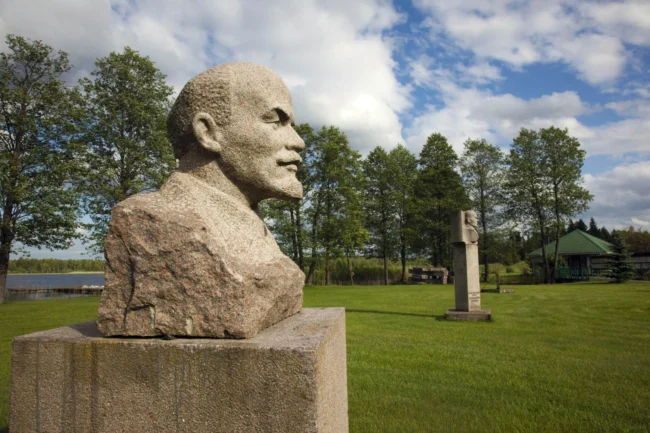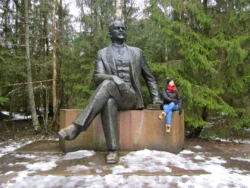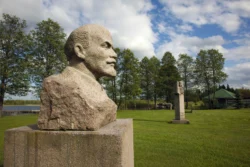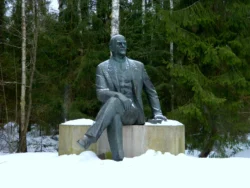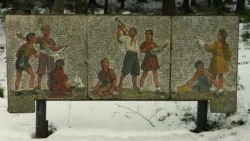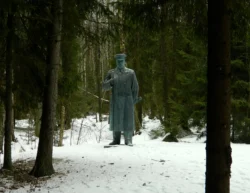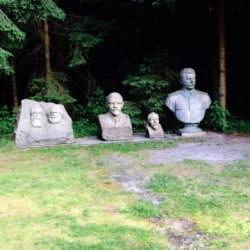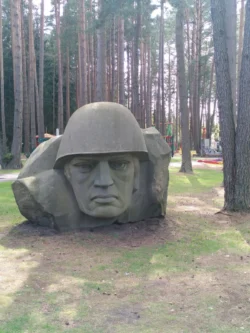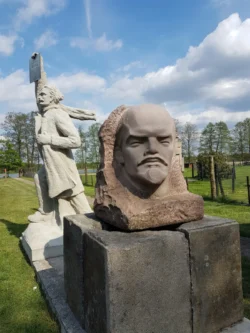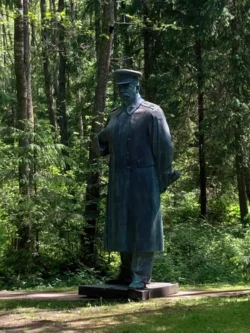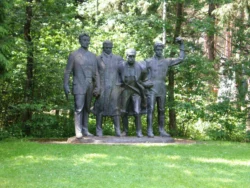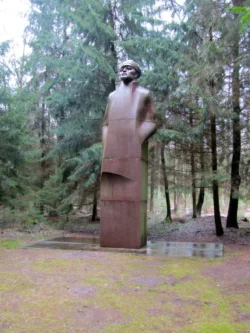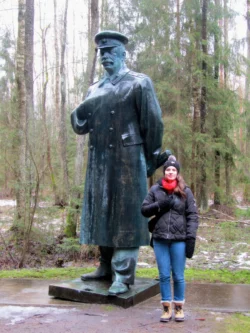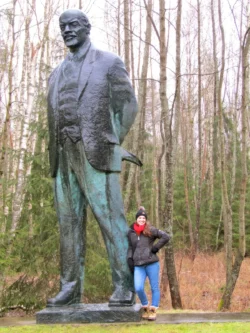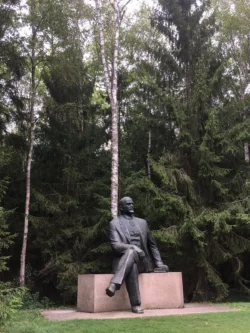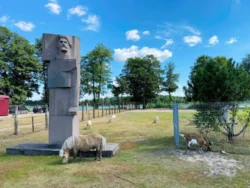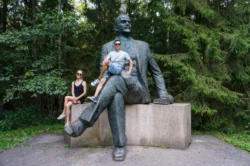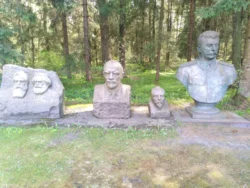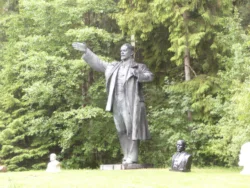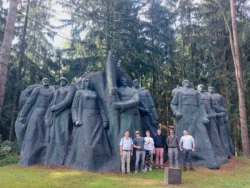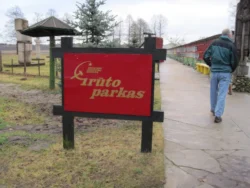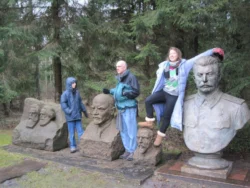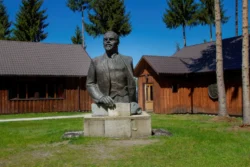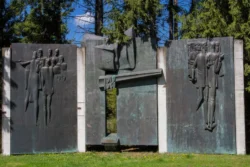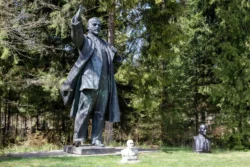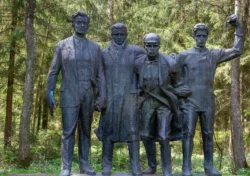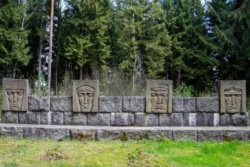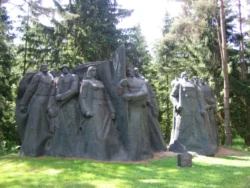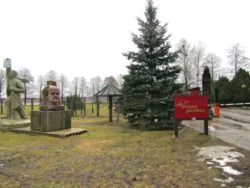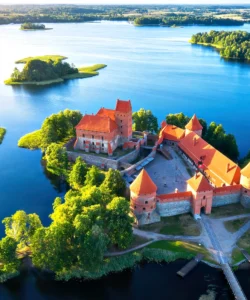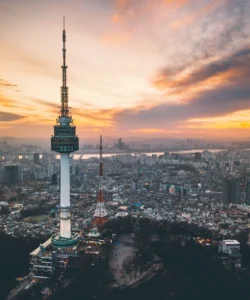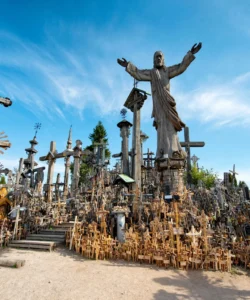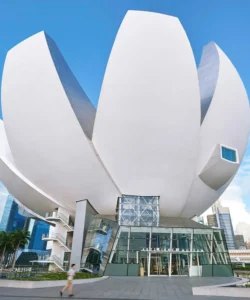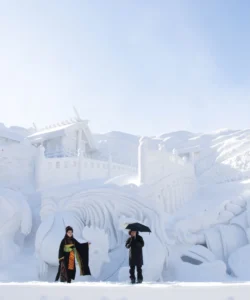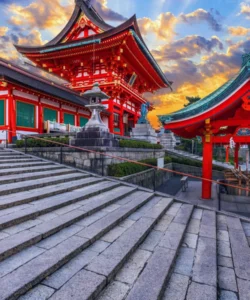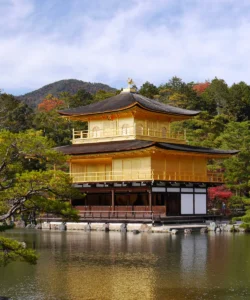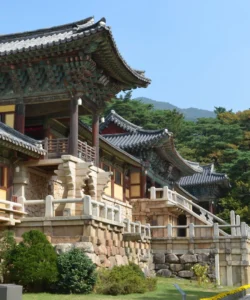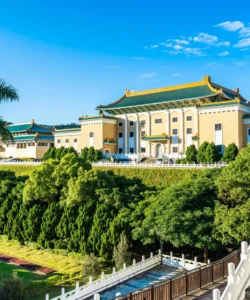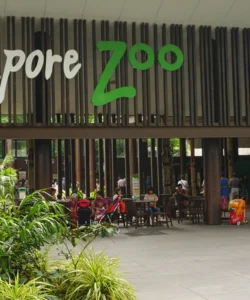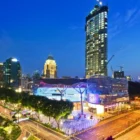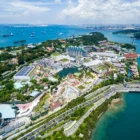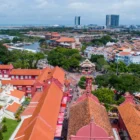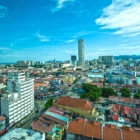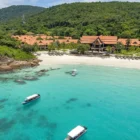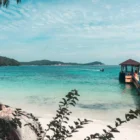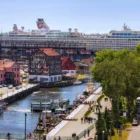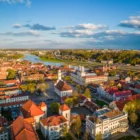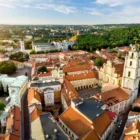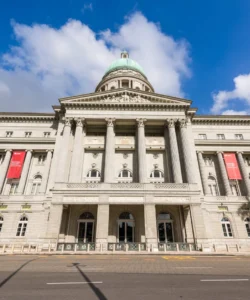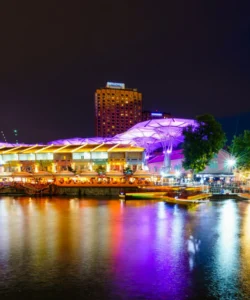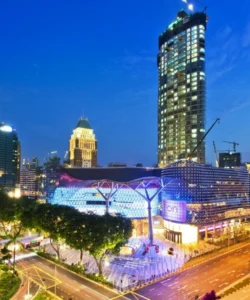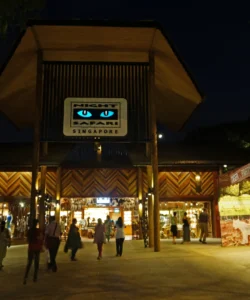Grūtas Park (Grūto parkas), often irreverently nicknamed “Stalin World” or the “Soviet Sculpture Graveyard,” is a unique and controversial open-air museum located near Druskininkai, Lithuania. It is a peculiar and thought-provoking testament to Lithuania’s half-century under Soviet occupation. Conceived by a private collector, Viliumas Malinauskas, the park displays a vast collection of Soviet-era statues and ideological relics that were dismantled from their prominent positions in Lithuanian cities and towns after the country regained its independence in 1991. More than just a collection of old statues, it serves as a powerful reminder of a totalitarian past and a unique interpretation of history.
Name: Grūtas Park (Grūto parkas)
Address: Grūtas Village, Varėna District Municipality, Lithuania. It is located about 8 km (5 miles) east of Druskininkai, and approximately 130 km (80 miles) south of Vilnius.
How to get there:
Reaching Grūtas Park, involves a significant international journey to Europe, followed by domestic travel within Lithuania:
- From Vilnius to Druskininkai (Gateway Town):
- By Bus: Buses depart frequently from Vilnius Bus Station to Druskininkai. The journey takes approximately 1 hour 45 minutes to 2 hours. This is the most common way.
- By Car: Driving from Vilnius to Druskininkai takes about 1.5 hours (approx. 120 km / 75 miles south of Vilnius).
- From Druskininkai to Grūtas Park:
- Local Bus: There are local buses from Druskininkai bus station to Grūtas village. Check the schedule locally, as they might not be very frequent.
- Taxi/Tuk-tuk: Taxis or local “auto rickshaw” equivalents are readily available in Druskininkai for the short ride to the park.
- Bicycle Rental: Some visitors rent bicycles in Druskininkai and cycle to the park, enjoying the surrounding pine forests.
Best Time to Visit:
Grūtas Park is open year-round, but the experience varies with the seasons:
- Late Spring (May to early June) and Early Autumn (September to early October): Pleasant temperatures for walking, and the park’s atmosphere of solemnity or irony is enhanced by the natural surroundings.
- Summer (Mid-June to August): Warmest weather, peak tourist season.
- Winter (November to April): Can be very cold and snowy. The snow-dusted statues create a stark and visually impactful scene, often adding to the park’s somber or eerie atmosphere.
Operating Hours and Entrance Fee:
- Operating Hours: Generally open daily, with varying hours depending on the season (e.g., 9 AM to 8 PM in summer, shorter hours in winter).
- Entrance Fee: There is an entrance fee to the park (typically around 10-15 EUR for adults).
- Additional features: The park also includes a small zoo, playgrounds, and a restaurant serving Soviet-era dishes.
Landscape and Architecture:
Grūtas Park’s “architecture” is not about grand buildings but about the repurposing and recontextualization of powerful ideological sculptures within a forest setting:
- Forest Setting: The park is deliberately designed to resemble a Soviet-era gulag or labor camp, set within a dense pine forest. The sculptures are displayed along winding paths, separated by fences, guard towers, and barbed wire, creating a deliberately stark and somewhat chilling atmosphere.
- Collection of Soviet Sculptures: The main “exhibits” are the dozens of colossal statues of Soviet leaders, propagandists, and “heroes” that once adorned public squares across Lithuania. These include:
- Lenin: Multiple statues of Vladimir Lenin in various poses.
- Stalin: Statues of Joseph Stalin.
- Marx and Engels: Founders of communism.
- Lithuanian Communist Figures: Local Lithuanian Communist Party leaders and “Soviet heroes.”
- Propagandistic Sculptures: Art depicting Soviet achievements, workers, and soldiers, often in heroic-realist styles.
- Gulag-Inspired Layout: The park’s layout is intentionally designed to evoke the oppressive atmosphere of a Soviet gulag, with watchtowers, barbed wire fences, and warning signs, designed to give visitors a visceral sense of the era.
- Propaganda Displays: Beyond the statues, there are also various propaganda posters, old Soviet-era cars, and other artifacts displayed, contributing to the historical narrative.
- Reconstructed Playground: A recreation of a typical Soviet-era children’s playground, adding a touch of dark irony.
- Zoo and Cafeteria: Adjacent to the main sculpture park, there’s a small zoo (housing local animals) and a cafeteria that serves simple Soviet-style meals. These elements add to the park’s quirky and sometimes controversial nature.
What makes it famous:
Grūtas Park is famous for:
- Unique Concept (“Soviet Sculpture Graveyard”): Its distinctive and somewhat controversial concept of collecting and displaying dismantled Soviet-era statues in a park designed to resemble a gulag is globally unique. It’s a powerful and often unsettling way to confront a nation’s totalitarian past.
- Symbol of Post-Soviet Independence: It stands as a profound symbol of Lithuania’s regained independence and its rejection of Soviet ideology, transforming symbols of oppression into educational exhibits.
- Controversial Yet Popular: Its very existence has sparked debate, but it remains a highly popular and thought-provoking tourist attraction, offering a visceral experience of a challenging historical period.
- Historical Reminder: It serves as a stark reminder of the hardships, propaganda, and ideological control of the Soviet era, particularly for younger generations and foreign visitors who did not experience it directly.
- Private Initiative: The park was created by a private individual, Viliumas Malinauskas, a mushroom and berry collector, who won a presidential decree to establish the museum, adding to its unusual backstory.
- “Dark Tourism” Destination: It falls into the category of “dark tourism,” attracting visitors interested in sites associated with death, disaster, or hardship.
Differences from some other wonders:
Grūtas Park distinguishes itself from other museums, historical sites, and even other “sculpture parks” in several profound ways:
- Recontextualization of Ideological Symbols: Unlike traditional art museums or historical parks that display objects in their original context or in a neutral setting, Grūtas Park deliberately removes ideological statues from their original public spaces and recontextualizes them within a gulag-like environment. This act of re-framing changes their meaning from symbols of power to symbols of oppression, a highly unique approach to dealing with a totalitarian past.
- Private Initiative, Public Controversy: While many museums are state-run, Grūtas Park’s origins as a private initiative that has continued to spark public debate about how to remember and display Soviet symbols is distinct.
- “Living” Historical Narrative: It aims to provide a feeling of the Soviet era, beyond just intellectual understanding. The gulag-inspired architecture and details create an immersive, sometimes unsettling, experience, making the history feel more “alive” and visceral.
- Focus on Totalitarian Propaganda: Its collection is specifically focused on the sculptural propaganda of a totalitarian regime. This makes it a specialized and comprehensive archive of Soviet monumental art and ideology, unlike general historical museums.
- Absence of Traditional Beauty: While many wonders are celebrated for their beauty or grandeur, Grūtas Park’s “beauty” lies in its starkness, its powerful message, and its controversial nature, rather than traditional aesthetic appeal.
- “Anti-Monument” Nature: In a way, it functions as an “anti-monument”, taking symbols of an unwanted past and re-presenting them to actively denounce the very ideology they once promoted. This counter-narrative approach is unique.
In essence, Grūtas Park is a profoundly unique and thought-provoking wonder, a living, unsettling museum that courageously confronts Lithuania’s Soviet past, transforming dismantled ideological symbols into a powerful and unforgettable testament to a nation’s resilience and its enduring desire for freedom.
